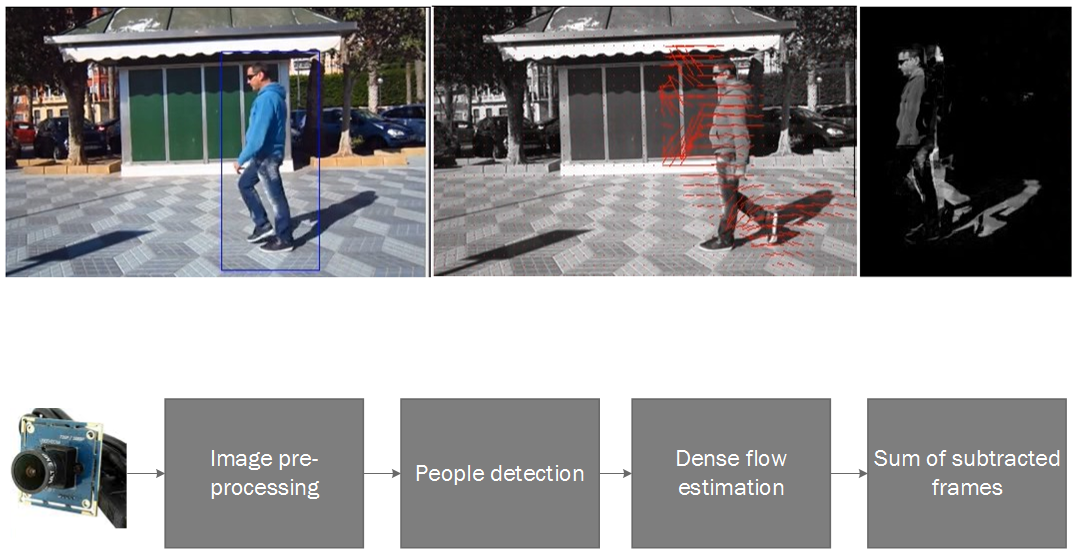Pedestrian direction recognition dataset
Estimation of pedestrian walking direction
Pedestrian movement direction recognition is an important factor in autonomous driver assistance and security surveillance systems. Pedestrians are the most crucial and fragile moving objects in streets, roads and events where thousands of people may gather on a regular basis. People flow analysis on zebra crossings and in commercial centres or events such as demonstrations, etcetera, are a key element to improve safety and to enable autonomous cars to drive in real life environments. This dataset was created for our work focused on using Convolutional Neural Networks (CNN) to achieve a good and reliable detection of pedestrians moving in a particular direction. We proposed a CNN technique that leverages current pedestrian detection techniques (HOG-linSVM) to generate a sum of subtracted frames (flow estimation around the detected pedestrian), which are used as an input for the proposed modified version of the AlexNet network. Therefore, we have created this novel dataset for this purpose, and analysed the importance of training in a known dataset for the neural network to achieve reliable results. From the best of our knowledge, no other dataset has been published that is annotated with ground truth information for pedestrian direction recognition. This dataset was classified manually, creating a ground truth split for training the proposed CNN architecture. The dataset comprised 7416 images for training and 1752 for validation. Images were classified according to three different categories, right, left and front: 2907 images were assigned to 'Right', 3099 images to 'Left' and 1410 to 'Front'.
How to cite: A. Dominguez-Sanchez, S. Orts-Escolano, M. Cazorla. "Pedestrian movement direction recognition using convolutional neural networks", IEEE Transactions on Intelligent Transport Systems. In press. 2017
Robotics & Tridimensional Vision Research Group. University of Alicante

